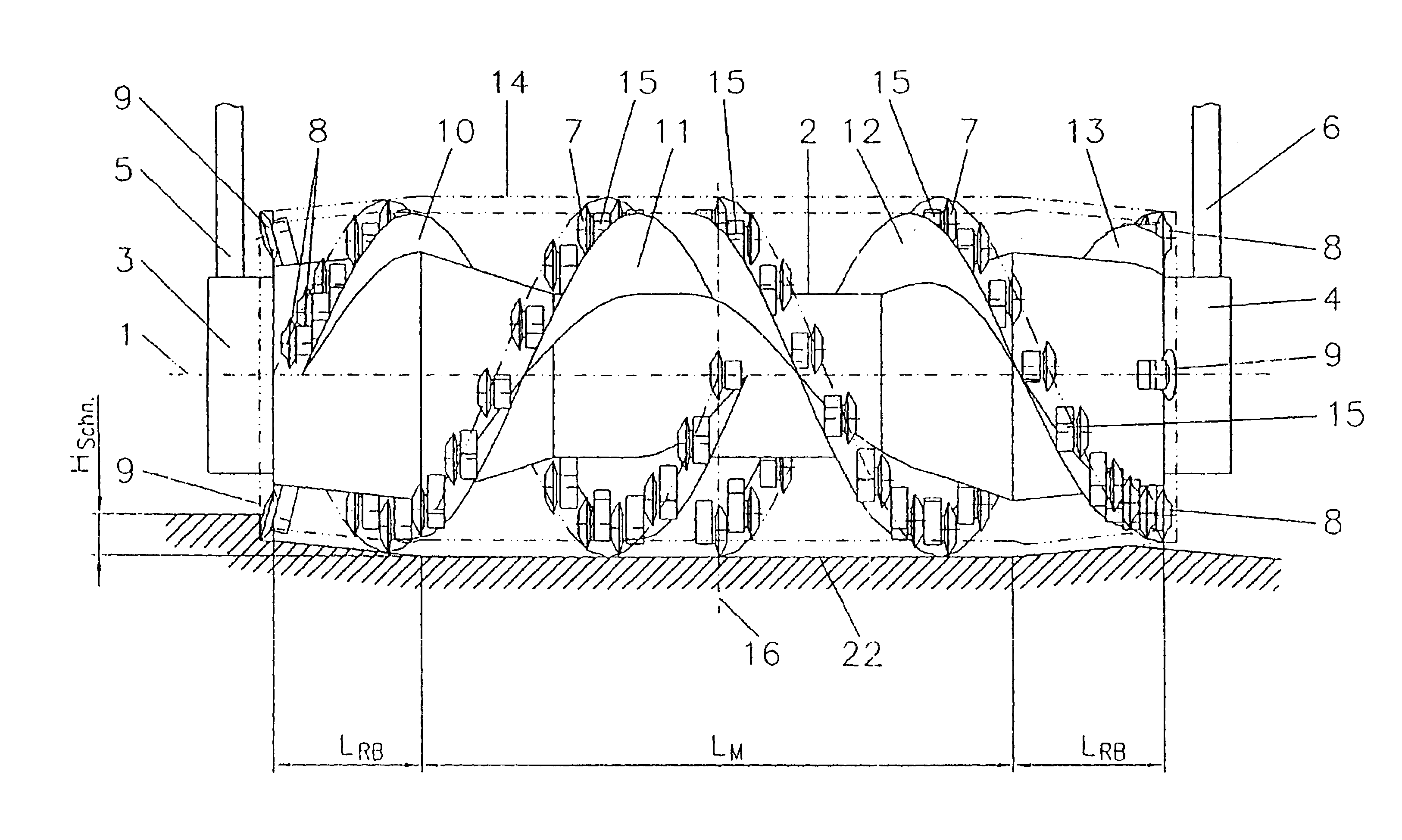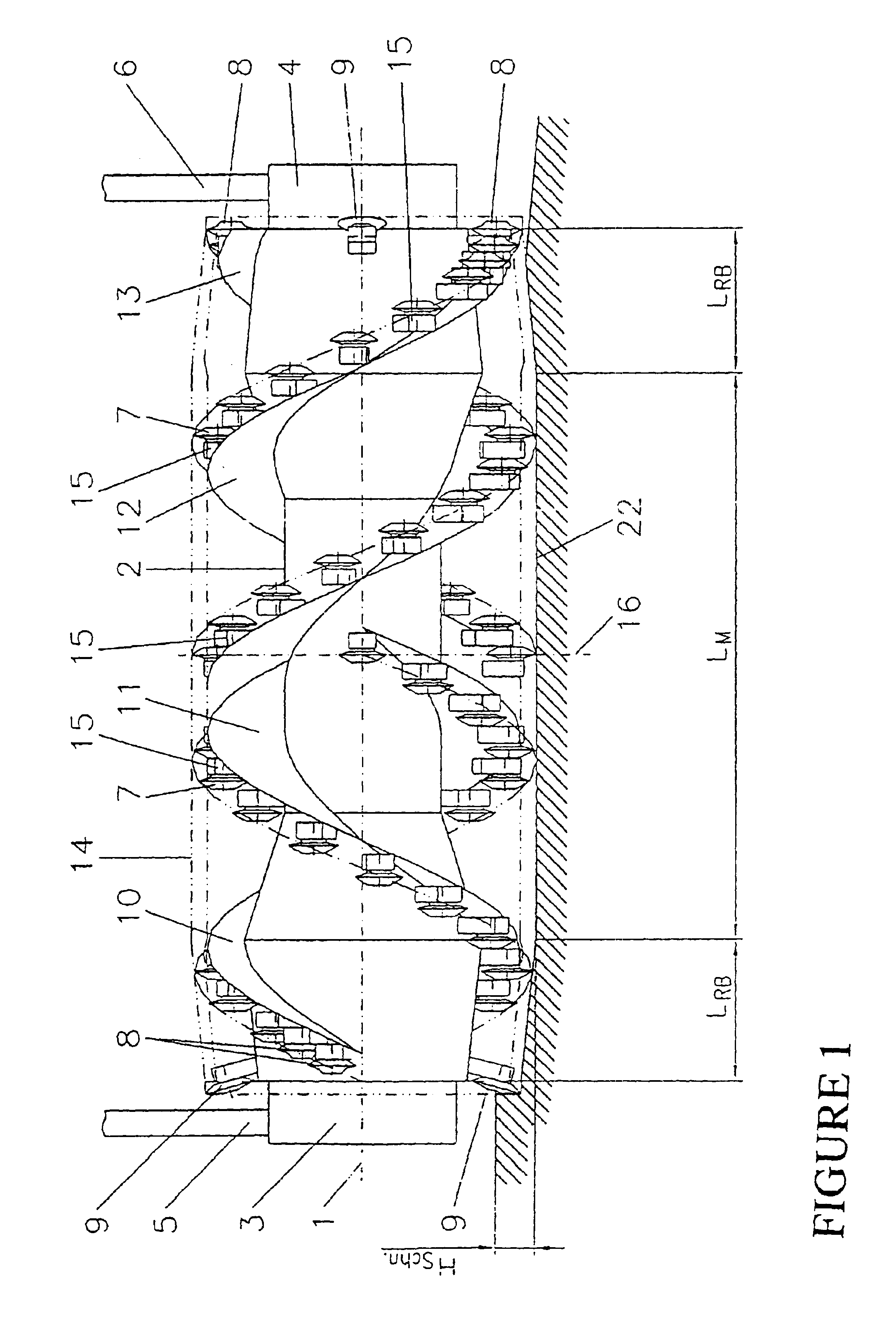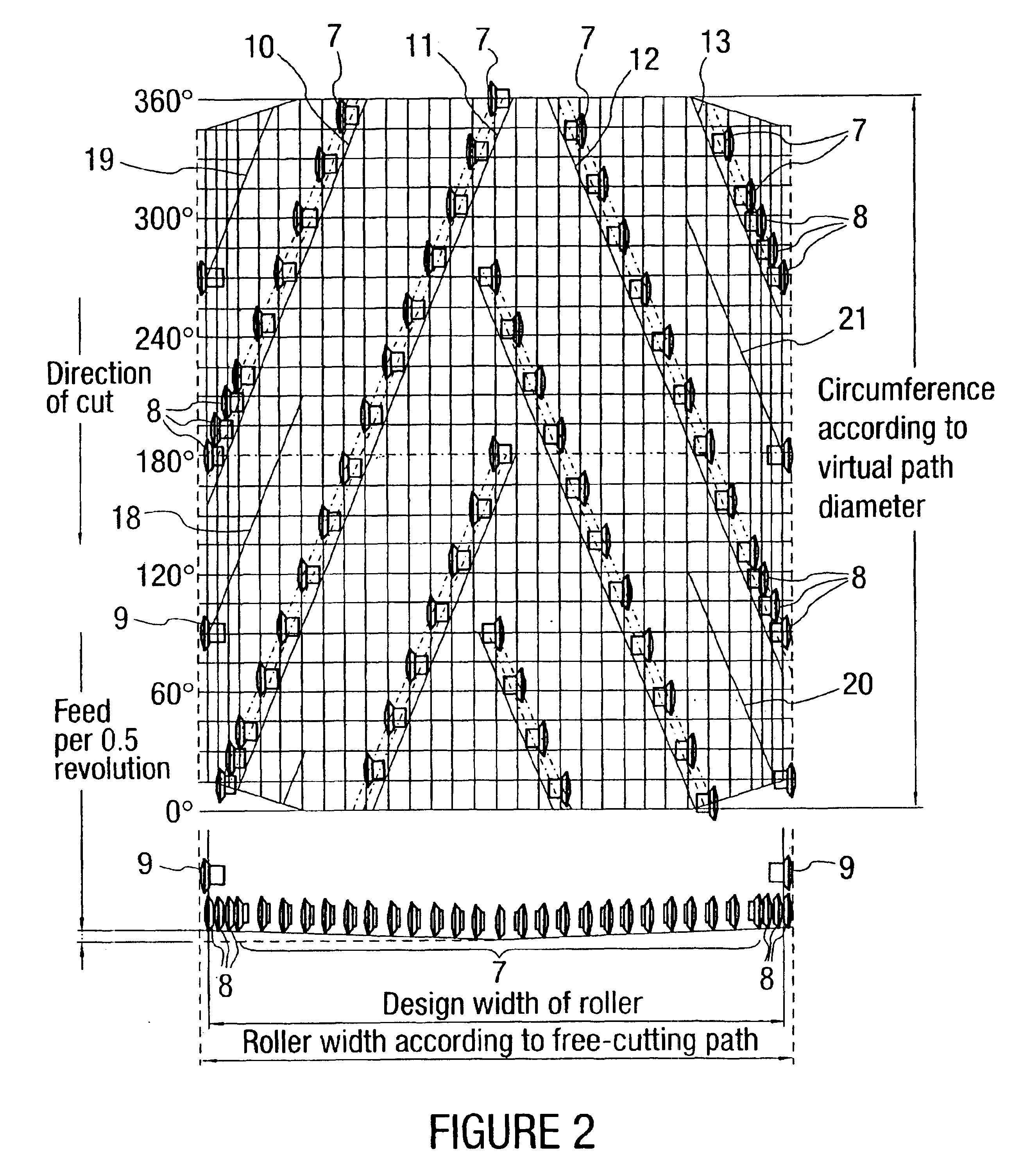Cutting roller for a continuously operating surface miner
a technology of cutting roller and surface miner, which is applied in the direction of cutting machines, open-pit mining, soil-shifting machines/dredgers, etc., can solve the problems of reduced mining output, increased energy consumption and wear of free-cutting rollers, and increased production losses, so as to achieve low specific energy consumption, low dust emission, and high strength
- Summary
- Abstract
- Description
- Claims
- Application Information
AI Technical Summary
Benefits of technology
Problems solved by technology
Method used
Image
Examples
Embodiment Construction
[0015]Referring to the drawings in particular, the cutting roller shown in FIG. 1 is the mining member for a surface miner for mining earth materials of high strength such as hard coal, ores and other mineral raw materials with high compressive strengths between 50 MPa and 140 MPa. Such a continuously operating surface miner, which is, however, not designed with its mining member for mineral raw materials of such a high compressive strength, is known from, e.g., Patent No. DE 199 41 799 A1. The cutting roller is arranged with its axis of rotation 1 in the horizontal position in front of the device in the mining direction. However, this is not a requirement. It may also be arranged between the front and rear chassis or at the end of the device.
[0016]The cutting roller comprises a roller jacket 2, in which a drive 3, 4 each is accommodated on both sides. The cutting roller is fastened to the surface miner by supports 5, 6, which are arranged at the frame of the device on both sides an...
PUM
 Login to View More
Login to View More Abstract
Description
Claims
Application Information
 Login to View More
Login to View More - R&D
- Intellectual Property
- Life Sciences
- Materials
- Tech Scout
- Unparalleled Data Quality
- Higher Quality Content
- 60% Fewer Hallucinations
Browse by: Latest US Patents, China's latest patents, Technical Efficacy Thesaurus, Application Domain, Technology Topic, Popular Technical Reports.
© 2025 PatSnap. All rights reserved.Legal|Privacy policy|Modern Slavery Act Transparency Statement|Sitemap|About US| Contact US: help@patsnap.com



